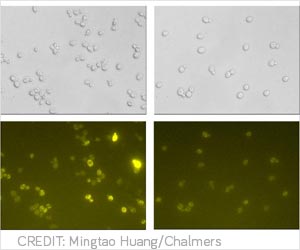A rapid, efficient and universal way of transforming yeast at the molecular level using a method called SCRaMbLE.

TOP INSIGHT
While it would take years to optimize yeast strains for industrial applications, but with SCRaMbLE it could take just two or three days.
Yeast is a very well understood organism and in a biological sense humans and yeast share a number of similarities in their genetic makeup. Therefore, re-building the yeast genome from the ground up helps us better understand the basis of human life.
"Essentially, we can fast-track the engineering cycle. Usually it would take years to optimize yeast strains for industrial applications, but with SCRaMbLE it could take just two or three days. When you can couple engineering with evolution, you have a very powerful tool in hand," said Prof. Cai.
The SCRaMBLE system not only allows researchers to integrate pathways into the synthetic yeast genome, but the yeast itself can also be evolved to become a better host under stress conditions, providing a unique opportunity for it to evolve, adapt to challenges and perform in extreme conditions, such as extreme temperatures and toxic environments.
This makes it particularly attractive for industrial biotechnology applications, such as the production of advanced medicines. This could have massive implications for the future study of DNA and the mass production of new medicines to treat illnesses such as malaria and tuberculosis (TB).
 MEDINDIA
MEDINDIA




 Email
Email






